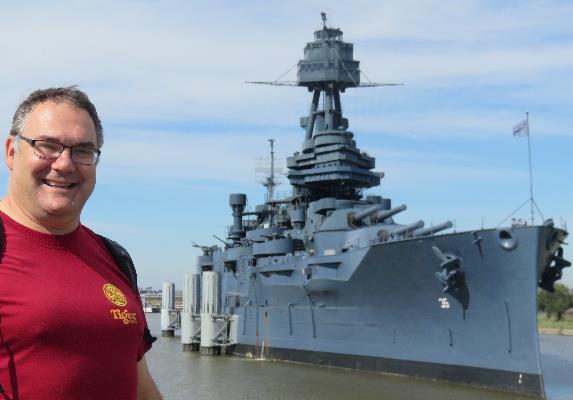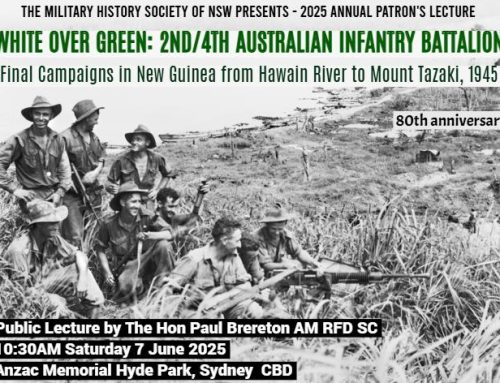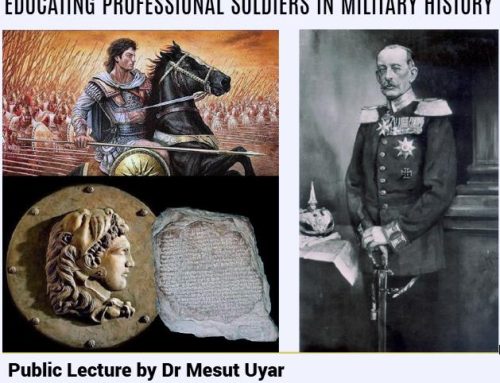Bargaining on Battleships: Washington Naval Conference 1921
A Public Lecture by Dr David Chessum
 The Washington Naval Conference held in Washington DC between November 1921 and February 1922 was one of the major diplomatic events of the interwar period. Senior delegations from the victorious nations of World War One, the United States, Japan, China, France, the United Kingdom, Italy, Belgium, the Netherlands, and Portugal, gathered to discuss naval disarmament and the resolution of outstanding Far Eastern problems. It was one of the earlier arms control conferences in history, which resulted in three major treaties: Four-Power Treaty, Five-Power Treaty (more commonly known as the Washington Naval Treaty), the Nine-Power Treaty, and a number of smaller agreements. This presentation will cover:
The Washington Naval Conference held in Washington DC between November 1921 and February 1922 was one of the major diplomatic events of the interwar period. Senior delegations from the victorious nations of World War One, the United States, Japan, China, France, the United Kingdom, Italy, Belgium, the Netherlands, and Portugal, gathered to discuss naval disarmament and the resolution of outstanding Far Eastern problems. It was one of the earlier arms control conferences in history, which resulted in three major treaties: Four-Power Treaty, Five-Power Treaty (more commonly known as the Washington Naval Treaty), the Nine-Power Treaty, and a number of smaller agreements. This presentation will cover:
- The naval background to the Conference
- Relative strength, and the Capital Ship Ratio controversy
- The Capital Ship Building Holiday, and Replacement Capital Ships
- Qualitative Limitation of Capital Ships
- Capital Ship Reconstruction Limitations
- Provisions for Aircraft Carriers, Cruisers and Submarines
- Treaty Compliance
- Conclusions
About the Presenter
 Dr David Chessum served for 23 years as a Weapon Engineering Officer in the Royal New Zealand Navy, including two tours of duty as a Head of Department on Leander class frigates, and attendance at the Australian Command and Staff College in Canberra. Since leaving the RNZN David has been employed as a Chartered Professional Engineer in both consulting and government roles, with a key focus on naval engineering and system safety. In parallel with his engineering career, David has compiled a comprehensive academic record, completing five degrees in a variety of disciplines. Since 2004, David has focused on research into the Interwar Naval Arms Control process, and the interactions between that process and naval strategy, naval architecture, and force structure. This research, which has included extensive review of archival material in the United Kingdom, USA, France, Australia and New Zealand, is the foundation of the PhD thesis which he completed at the University of New South Wales in Sydney. His current major project is the conversion of that thesis into a book for publication. David is an active member of the Naval Historical Society of Australia, and the International Naval Research Organisation. He volunteers at both the Nepean Naval Museum, and the Australian National Maritime Museum, where he is a volunteer tour guide on ex-HMAS Vampire, and ex-HMAS Onslow.
Dr David Chessum served for 23 years as a Weapon Engineering Officer in the Royal New Zealand Navy, including two tours of duty as a Head of Department on Leander class frigates, and attendance at the Australian Command and Staff College in Canberra. Since leaving the RNZN David has been employed as a Chartered Professional Engineer in both consulting and government roles, with a key focus on naval engineering and system safety. In parallel with his engineering career, David has compiled a comprehensive academic record, completing five degrees in a variety of disciplines. Since 2004, David has focused on research into the Interwar Naval Arms Control process, and the interactions between that process and naval strategy, naval architecture, and force structure. This research, which has included extensive review of archival material in the United Kingdom, USA, France, Australia and New Zealand, is the foundation of the PhD thesis which he completed at the University of New South Wales in Sydney. His current major project is the conversion of that thesis into a book for publication. David is an active member of the Naval Historical Society of Australia, and the International Naval Research Organisation. He volunteers at both the Nepean Naval Museum, and the Australian National Maritime Museum, where he is a volunteer tour guide on ex-HMAS Vampire, and ex-HMAS Onslow.





